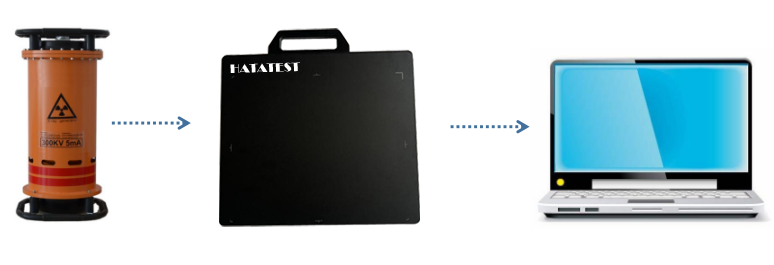What is meant by Pressure Testing?
Pressure Testing is a non-destructive test performed to ensure the integrity of the pressure shell on new pressure equipment, or on previously installed pressure and piping equipment that has undergone an alteration or repair to its boundary(s).
Pressure testing is required by most piping codes to verify that a new, modified, or repaired piping system is capable of safely withstanding its rated pressure and is leak tight. Compliance to piping codes may be mandated by regulatory and enforcement agencies, insurance carriers, or the terms of the contract for the construction of the system. Pressure testing, whether or not legally required, serves the useful purpose of protecting workers and the public.
Pressure testing may also be used to establish a pressure rating for a component or special system for which it is not possible to establish a safe rating by calculation. A prototype of the component or system is subjected to a gradually increasing pressure until measurable yielding first occurs or, alternatively, to the point of rupture. Then by using derating factors specified in the code, or the standard, appropriate to the component or system, it is possible to establish a design pressure rating from the experimental data.

Piping Codes
There are a great many codes and standards relating to piping systems. Two codes of major importance for pressure and leak testing are the ASME B31 Pressure Piping Code and the ASME Boiler and Pressure Vessel Code. While these two codes are applicable to many piping systems, other codes or standards may have to be met as required by the authorities, insurance companies, or the owner of the system. Examples might be AWWA standards for water transmission and distribution system piping. The ASME B31 Pressure Piping Code has several sections. They are:
- ASME B31.1 for Power Piping
- ASME B31.2 for Fuel Gas Piping
- ASME B31.3 for Process Piping
- ASME B31.4 for Liquid Transportation Systems for Hydrocarbons, Liquid Petroleum Gas, Anhydrous Ammonia, and Alcohols
- ASME B31.5 for Refrigeration Piping
- ASME B31.8 for Gas Transmission and Distribution Piping Systems
- ASME B31.9 for Building Services Piping
- ASME B31.11 for Slurry Transportation Piping Systems
The ASME Boiler and Pressure Vessel Code also has several sections which contain pressure and leak testing requirements for piping systems, pressure vessels, and other pressure retaining items. These are:
- Section I for Power Boilers
- Section III for Nuclear Power Plant Components
- Section V for Non Destructive Examination
- Section VIII for Pressure Vessels
- Section X for Fiberglass Reinforced Plastic Pressure Vessels
- Section XI for In Service Inspection of Nuclear Power Plant Components
There is great similarity with respect to the requirements and procedures for testing among the many codes. Various leak-testing methods, planning, preparation, execution, documentation, and acceptance standards for pressure testing will be discussed in this chapter. Equipment, useful for pressure testing, will also be included in the discussion. The material that follows should not be considered a substitute for a complete knowledge or careful study of the particular code requirement that must be used to test a particular piping system.
-
 Sales@hata-ndt.com
Sales@hata-ndt.com -
 0086-0371-86172891
0086-0371-86172891










